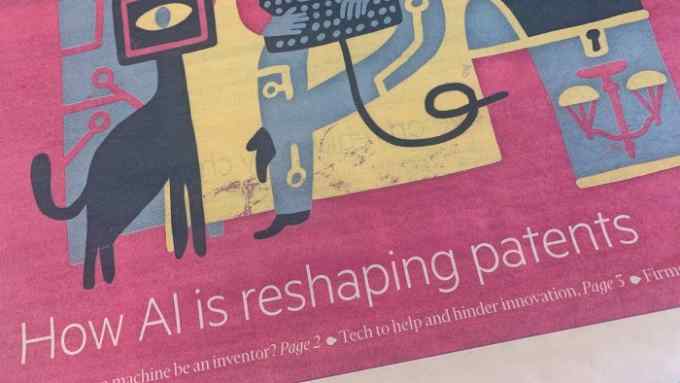EU’s patent reforms gain speed

Roula Khalaf, Editor of the FT, selects her favourite stories in this weekly newsletter.
Just as the European Union adopted the Unitary Patent system on June 1, a trio of complementary reforms known as the “patent package” was also being refined. But these three proposed rules from the European Commission are not without their critics.
This patent package is intended as a continuation of EU harmonisation efforts in the area of intellectual property. Its draft rules, first put forward in April, will “make the patents system more effective by further eliminating Single Market fragmentation, reducing red tape, and enhancing efficiency”, according to a statement from the Commission. “This solid framework will empower economic operators and competent authorities to better protect innovation while ensuring fair access, including during emergency situations,” it explains.
Among the proposed changes is the creation of a more transparent and standardised method for Standard Essential Patents (SEPs). These are written for technology that has been declared essential for the implementation of a technical standard — for instance, 5G, WiFi, or Bluetooth, as well as audio compression and decompression standards.
The proposed rules would make these patents available for licensing to those who need them, in order to legally sell products that require them.
“In principle, the rules are a very good step,” says Daniel Scola, managing partner at Hoffmann & Baron.
In the area of SEPs, the European Commission believes the existing self-regulation was not enough.
So the Commission’s objective with the proposed new framework is to ensure that the patent owners and implementers can innovate while remaining competitive in global markets. Another goal is to ensure that SMEs and consumers benefit from “fair and reasonable prices”.
However, the new SEP rules are facing pushback. Klaus Grabinski, chief judge of the Unified Patent Court’s Court of Appeal, said last month that the rules, as written, fail to comply with the EU Charters of Fundamental Rights. “I fully support the Commission’s aim to enhance transparency, but access to justice is a core fundamental right,” he told ManagingIP.com. But he added that he was confident the “regulation will be fully compliant . . . once it has gone through the [full] legislative process”.
Antje Brambrink, counsel at Finnegan, Henderson, Farabow, Garrett, & Dunner in Munich, believes the SEPs changes are the most highly debated among the three.
Overall, she says, the rules emphasise that “it’s important to protect such innovations and attract a venue in Europe for these companies to go on with their research and development.” They should simultaneously consider the need to compete on manufacturing and marketing, she adds, which would “really strengthen the European market”.
The patent package also includes the introduction of a Unitary Supplementary Protection Certificate, which the Commission views as complementary to the Unitary Patent.
As it stands, SPC protection is available only at a national level, which the Commission said: “suffers from fragmentation, which leads to complex and costly procedures, as well as legal uncertainty”.
Under the proposed rules, the SPCs would undergo a centralised examination procedure, a streamlined process which would be overseen by the EU Intellectual Property Office and national IP offices.
Another measure aimed at strengthening the EU’s Unitary Patent is compulsory licensing in a crisis, which allows the use of a product without the consent of the patent holder. In the “aftermath of Covid-19”, the Commission said it envisaged that the measure would “help provide access to key crisis-relevant products and technologies as a last resort in times of crisis”.
Jan Walter, senior policy adviser at Akin, Gump, Strauss, Hauer & Feld, says many “see it as a surprise”. However, he suggests that should not be, given the EU’s “evolving narrative and position in international organisations” such as the World Trade Organization throughout the pandemic, coupled with the Commission’s long-term efforts to harmonise on IP, EU-wide.
Walter adds that, while a lot of new EU legislation often takes years to finalise and adopt, he believes this package will be “pushed hard” by proponents, including the Commission, to be adopted before the European parliament’s election next June.
The result “will demonstrate a new balance of IP rights as the EU understands it emerging from the pandemic,” he says.
But, even if the rules are adopted, whether they will be effective is another matter.
“Implementation is always the most difficult part of any legislation,” said Hoffmann & Baron’s Scola.
It remains to be seen “whether the final rules and their implementation will be easy enough to be effective and encourage compliance.”

Comments